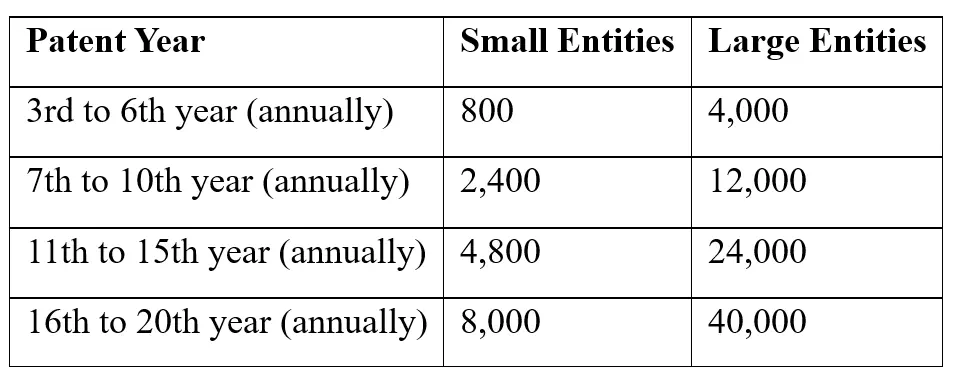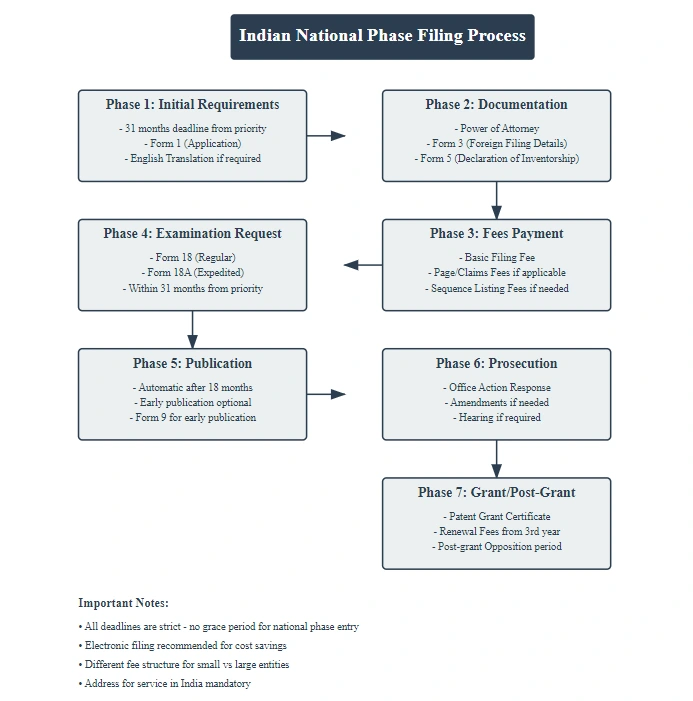Introduction to national phase patent filing India
The journey of patent protection often leads innovators to India, a country with immense market potential and a rapidly evolving innovation landscape. For international patent applicants navigating the complexities of India’s patent system, understanding the national phase entry process is crucial. This comprehensive guide illuminates the path forward, offering detailed insights into the requirements, procedures, and strategic considerations for successfully filing your patent application in India.
Critical Timing for National Phase Entry
Time management is paramount when considering patent protection in India. The Indian Patent Office has established a strict deadline of 31 months from the priority date for entering the national phase under both PCT Article 22(3) and Article 39(1)(b). This timing requirement demands particular attention because India, unlike some other jurisdictions, does not permit the reinstatement of rights under PCT Rule 49.6. Missing this crucial deadline effectively closes the door on patent protection in India through the PCT route.
Essential Requirements for PCT national phase Filing
The foundation of a successful national phase application in India rests on several fundamental requirements. At its core, the Indian Patent Office requires a complete English translation of your application if the original is in another language. This requirement extends beyond mere convenience – it’s a statutory obligation that ensures proper examination and public disclosure of the invention.
The Indian patent system also requires applicants to maintain an address for service within India. While representation by a patent agent isn’t mandatory, having a local address for official communications is non-negotiable. This requirement helps facilitate smooth communication between the patent office and applicants while ensuring timely receipt of important notices and office actions.
Language and Translation Considerations in PCT national phase patent filing India
The Indian Patent Office’s language requirements are straightforward but comprehensive. Every aspect of your application must be available in English, including the complete description, all claims (both in their original form and any amended versions), any text matter within drawings, and the abstract. This requirement extends to amendments made during the international phase, ensuring consistency and clarity throughout the examination process.
Understanding the Fee Structure for PCT national phase in India
The Indian Patent Office has developed a sophisticated fee structure that recognizes different categories of applicants. This system particularly benefits natural persons, startups, small entities, and educational institutions by offering significantly reduced fees compared to larger corporations. Electronic filing, which has become the preferred method of submission, offers substantial cost savings across all categories.
The fee structure reflects India’s commitment to fostering innovation while maintaining accessibility to the patent system. Basic filing fees start at 1,600 INR for natural persons and startups filing electronically, while larger entities face higher fees of 8,000 INR. The system includes additional considerations for applications with extra pages, multiple claims, or several priorities, creating a comprehensive fee framework that scales with application complexity. You can access the official fees and forms for national phase patent filing in India from link
Document Requirements and Special Considerations PCT national phase
India’s patent system includes several unique requirements that deserve careful attention. The Declaration of Inventorship, for instance, must be provided if not already submitted during the PCT phase. Within six months of entering the national phase, applicants must file a Statement of Foreign Applications using Form 3, detailing related applications filed in other countries.
For applications involving biotechnology innovations, particularly those containing nucleotide or amino acid sequences, the Indian Patent Office requires electronic submission of sequence listings. This technical requirement ensures proper examination and accessibility of biological sequence information.
The Examination of PCT national phase
The examination process in India follows a structured path that begins with the Request for Examination. This crucial step must be initiated within 31 months from the priority date. For those seeking faster processing, India offers an expedited examination option under specific circumstances.
Once examination begins, applicants typically receive their first examination report within six to twelve months. The office provides a six-month window to respond to these reports, with the possibility of a three-month extension. This timeline allows for thorough consideration of examiner comments while maintaining momentum in the application process.
India’s patent system also incorporates opposition proceedings at two stages. Pre-grant opposition allows interested parties to challenge the application after publication but before grant. Post-grant opposition remains available for twelve months after the patent grant, providing additional opportunities for public scrutiny of patent validity.
Navigating Common Challenges
Success in the Indian national phase often depends on effectively addressing several common challenges. Documentation requirements can be complex, particularly regarding translations and power of attorney documents. Early preparation and attention to detail can help avoid delays and complications.
Fee calculations often present another hurdle, as the multi-tiered system requires careful consideration of applicant category and various supplementary fees. Working with experienced local professionals can help ensure accurate fee assessment and timely payment.
Examination timelines in India can be longer than some applicants expect. Understanding the available expedited examination options and maintaining clear communication channels can help manage these temporal challenges effectively.
Concluding Thoughts
While the Indian national phase application process may appear daunting at first glance, understanding its fundamental requirements and working with experienced professionals can make it manageable. Success often comes from careful planning, particularly regarding deadlines and document preparation. The potential benefits of patent protection in India’s vast and growing market make navigating these complexities worthwhile for many international applicants. To file national phase patent in India contact us now at patent@legismith.com
Essential PCT national phase Patent Filing Fees in India (2024)
Basic Filing Fees Comparison (Form 1)
The fees below are shown in Indian Rupees (INR). For simplicity, all fees are shown for electronic filing, which is the recommended method.
[table id=2 /]
*Small Entities include Natural persons, Startups, Small entities, and educational institutions
Key Examination Fees

Publication Fees

Amendment Fees (Form 13)

Renewal Fees (Maintenance Fees)

Note: This guide is for informational purposes only and should not be considered legal advice. Requirements and fees may change over time. Always consult with a qualified patent professional for specific guidance. To file national phase patent application in India contact us now at patent@legismith.com



